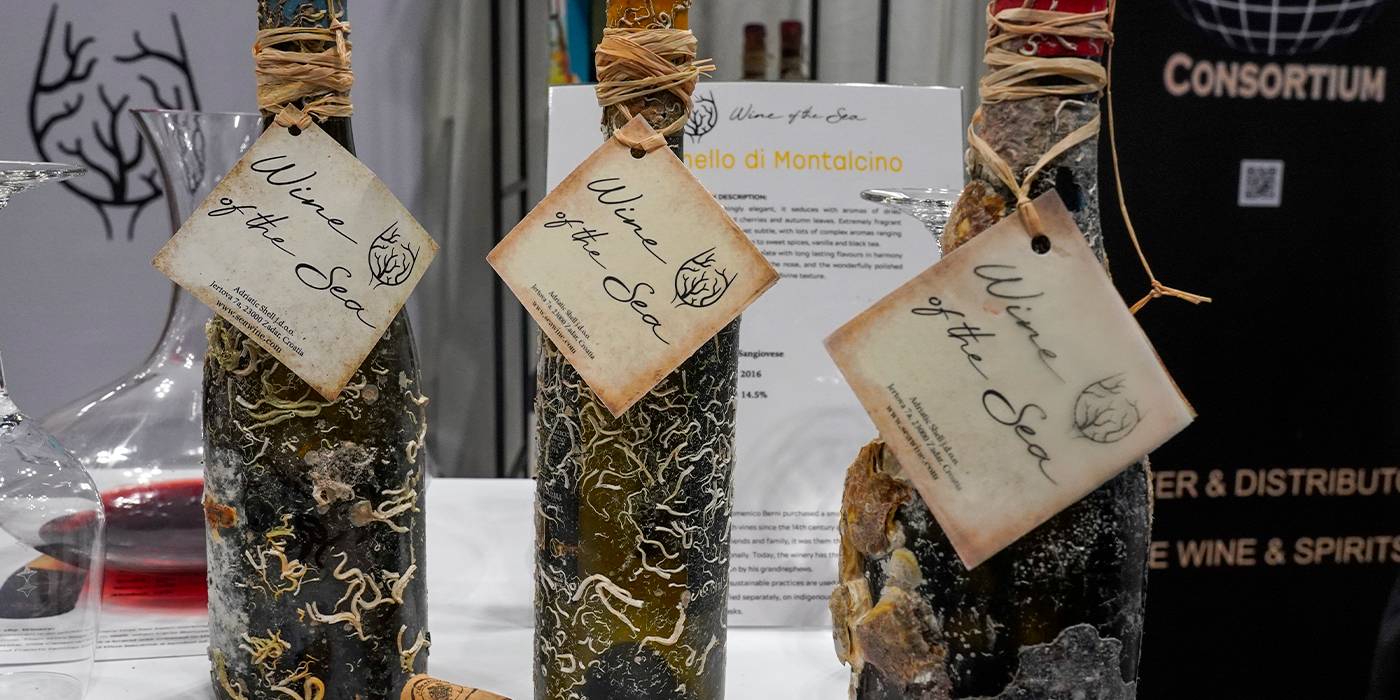Underwater wines
Discover what underwater wines are and how ageing beneath the sea can add unique characteristics to the wines. Don’t miss it!

Eva Pizarro
Sommelier at Fierro restaurant and trainer at Tandem Gastronómico.
About 15 years ago, while working in Galicia, I came across a bottle of Sketch, a white wine made from Albariño grapes crafted by the renowned enologist Raúl Pérez, who had just been awarded 100 Parker points.
It wasn’t an ordinary bottle; it had traces of barnacles and seaweed stuck to its glass. The wine had been aged underwater!!!! Yes, it was the first I had heard of it. However, it wasn’t the first time I had heard stories of old bottles or amphorae recovered from the seabed that produced outstanding wines, but it was the first time I got to try one myself.
Such things always create sensation and intrigue, so we didn’t wait for a special occasion to uncork it; we did it right away.
Raúl made this Albariño from grapes sourced from Meaño in the Rías Baixas. He decided to keep some of these bottles submerged under the sea, at about 19 metres depth in the Ría de Arousa, in mussel rafts, no less!
The wine is wonderful, both in its underwater version, which I believe is now only produced for the winery's internal use and in its traditional production method without ageing on the rafts. It’s one of the great white wines of our country.
Nowadays, many wineries have joined this type of ageing. Perhaps the most iconic project is Crusoe Treasure, with 3 wines on the market: Sea Soul, Sea Passion and Sea Legend, which I recently had the opportunity to try. They have over 10 years of experience in this type of ageing and are the first artificial reef underwater winery in Spain and the world. About 700 meters off the coast of Biscay, more than 1,000 bottles from different regions of Spain rest under the sea. There, researchers study the influence of currents, humidity, pressure, and other factors on the evolution of the wines aged in this environment.

But this isn't unique. Renowned Jerez winemaker Luis Pérez also crafts Garum Submarino, a red wine made from Tintilla de Rota grapes, aged underwater. Unlike other methods, Pérez uses amphorae rather than bottles, mirroring the submerged treasures from Roman times that have, in certain instances, proven to be remarkably successful when retrieved.
In Galicia, others have followed Raúl Pérez's example. Attis produces its Attis Mar, showcasing bottles with marine remains embedded in them, which captivate enthusiasts and generate considerable interest.
Bodegas D’Fran replaces the Atlantic waters with those from the reservoir of the Cañones del Río Sil in Ribeira Sacra.
The coasts of Valencia and the Canary Islands also harbour wine treasures in their depths. This is not a phenomenon exclusive to our country. Mira Winery in California, Viña Casanueva in Chile, Italian wineries, and French houses are also exploring this method, with some even ageing sparkling wines.
The result? You will have to try it – without a doubt a unique and different experience to continue enjoying wine.
What do you think about?
Share comments, opinions and tricks with the Community







